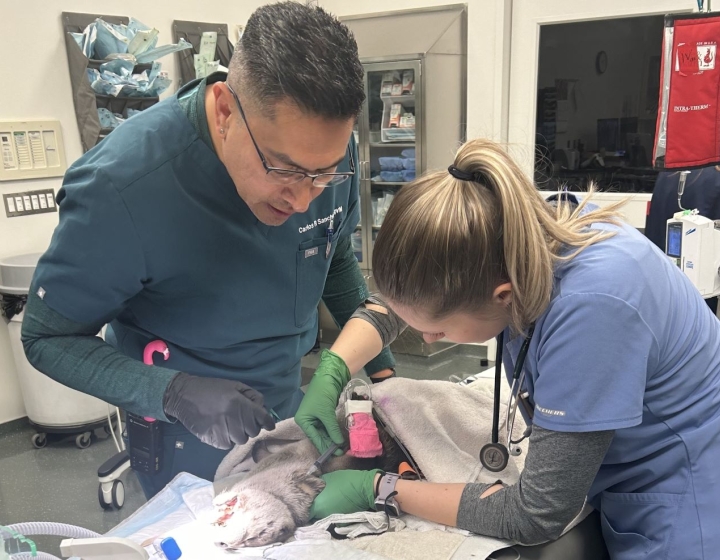Study confirms COVID-19 nostril swab best way to test, supports short isolation
The COVID-19 pandemic has brought constant change to our lives, including how we test for the virus. In the early days, it was the nasopharyngeal swab — the swab that went way, way up the nose. Next was the saliva collection, and some did sublingual — under the tongue swabs. Later came anterior nares swabs — the much less-invasive swabs just inside the nostril.
With these differing sample methods, scientists were left wondering — which was best? In a study recently published in the journal Microbiology Spectrum, researchers at the Cornell University College of Veterinary Medicine have confirmed that testing samples from just inside the nostril (the kind used in home tests) are the most effective way to test and track COVID-19. The study also confirms recent CDC isolation guidelines.
Alongside Cornell colleagues, Dr. Diego Diel, associate professor in the Department of Population Medicine and Diagnostic Sciences and director of the virology laboratory at the Animal Health Diagnostic Center, obtained samples from patients in Tompkins County through a collaboration with Dr. Elizabeth Plocharczyk from the Cayuga Medical Center. Four different samples were used: Nasopharyngeal swabs, anterior nares swabs, saliva, and sublingual swabs. The scientists also collected samples from symptomatic, asymptomatic, and post-symptomatic individuals — those who had recovered from illness — to better understand testing efficiency in these populations.
"The study addressed the very important issue of identifying a sample type that would allow reliable detection of the virus, without significantly compromising the sensitivity of detection,” says Diel.
When they compared the different sample types, the researchers found that nasopharyngeal samples provided the best rate of detection, from 92% to 100%. This is likely because the virus replicates in the nasal turbinate, the tissue structures in the uppermost portion of the nose that this deep swabbing technique is able to access and sample.
Detection rates from anterior nares and saliva specimens were slightly lower, at 92–96% for symptomatic patients. This detection rate was lower when the samples came from asymptomatic patients (75% to 92%). SARS-CoV-2 detection of sublingual specimens was much poorer, with detection rates of only 40–60% from symptomatic patient specimens and 25% to 42% from asymptomatic patient specimens.
Detection rates in symptomatic, asymptomatic and post-symptomatic patients was fairly intuitive, with detection being most robust in symptomatic patients, ranging from 92% to 100%, depending on the test used. For all tests, the virus was slightly harder to detect in asymptomatic patients at a rate of 75% to 96%. Once symptoms were resolved in post-symptomatic patients, detection was much more difficult.
The team also investigated the infectivity, or the level of infectious viral particles excreted in each of the sample types and from the different patient categories. As predicted, the most infectious samples came from symptomatic patients, while less than one-third of specimens collected from asymptomatic patients were infectious. The scientists were unable to isolate any infectious virus from post-symptomatic patient samples.
“We were surprised at the relatively short period in which infectious virus was detected,” Diel said. “The data is aligned with current CDC guidelines and their decision to decrease patient isolation periods from an initial 14 day-period to 10 and ultimately to five.”
This new data gives health practitioners some practical guidance. “This study served as the foundation for the Cornell COVID-19 surveillance program testing labs and confirmed the use of anterior nares specimens as the specimen of choice, given its reasonable sensitivity and ease of collection,” says Diel.
Written by Lauren Cahoon Roberts





